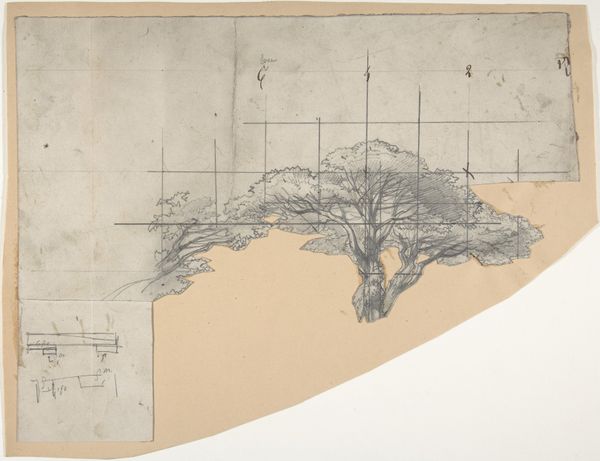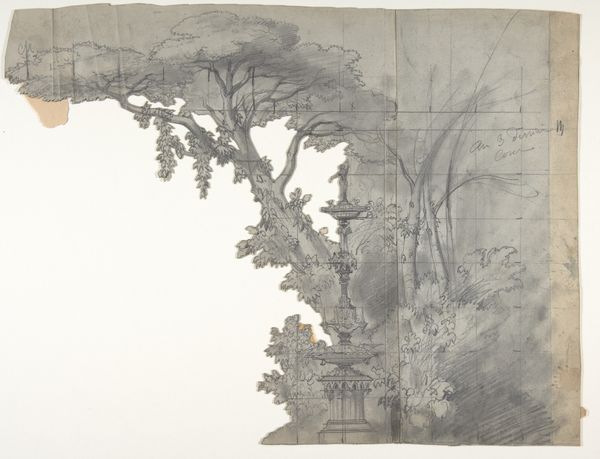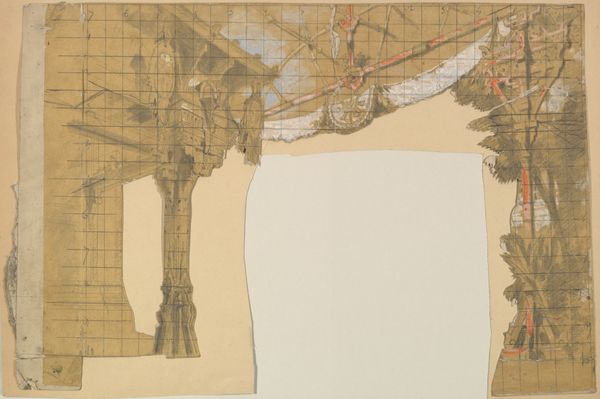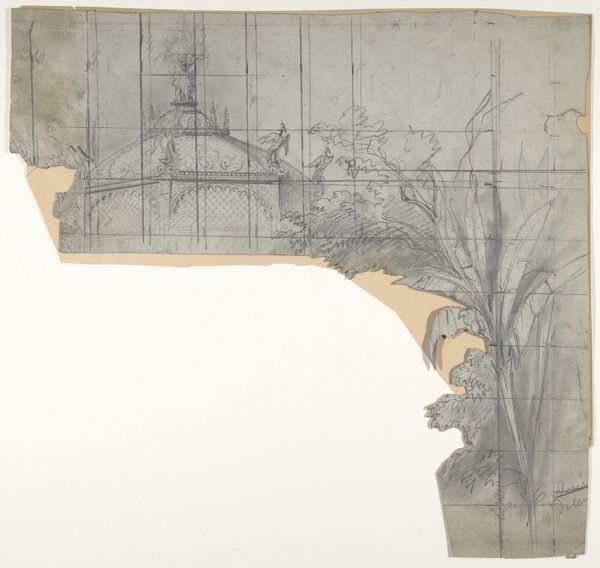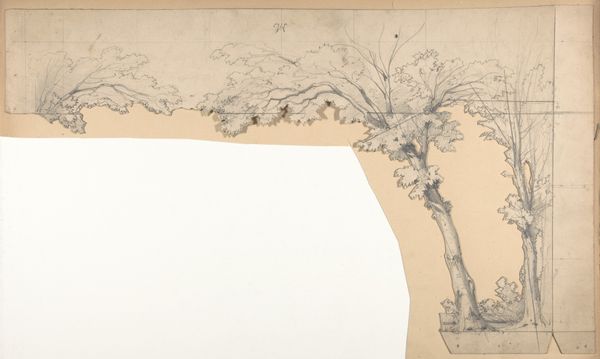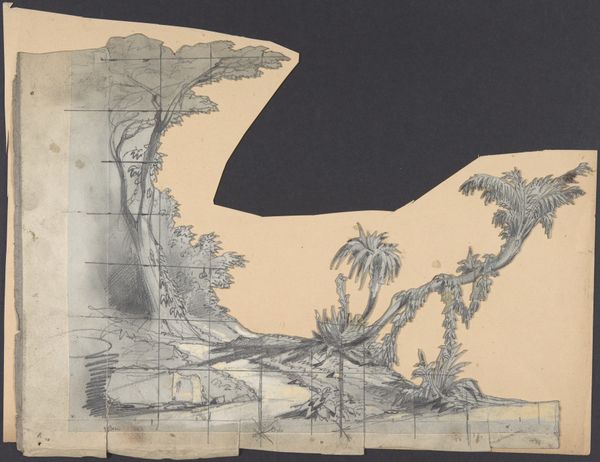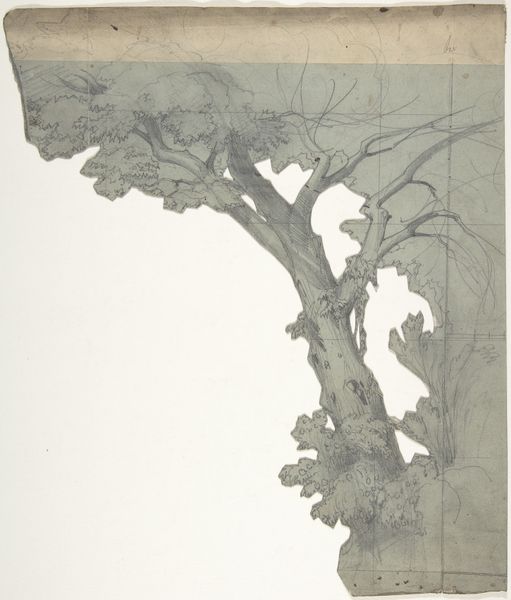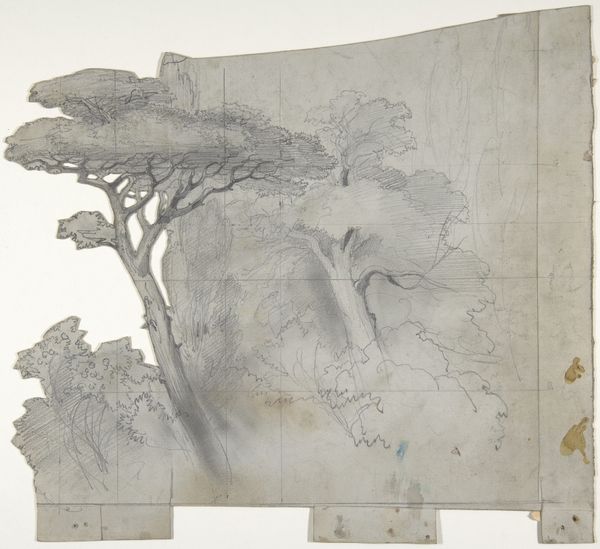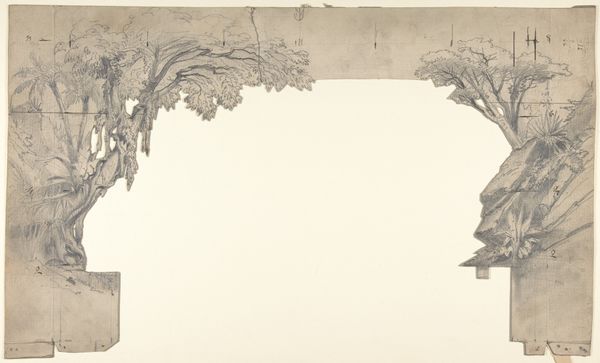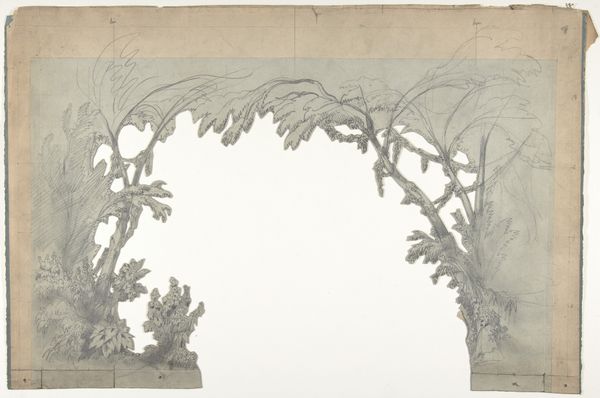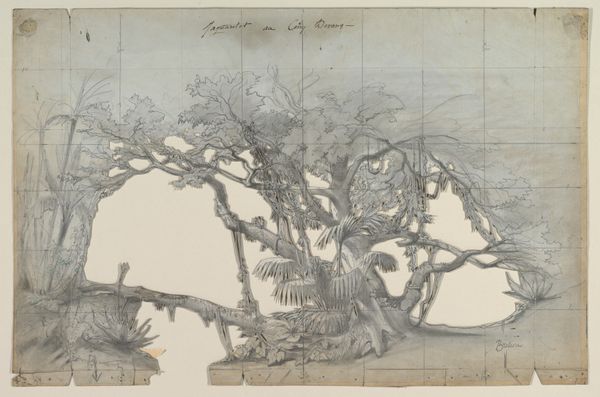
Design for a Stage Set at the Opéra, Paris 1830 - 1890
0:00
0:00
drawing, print, watercolor
#
tree
#
drawing
# print
#
landscape
#
watercolor
#
watercolour illustration
#
watercolor
Dimensions: Irregular sheet: 14 1/8 x 19 3/4 in. (35.9 x 50.2 cm)
Copyright: Public Domain
Curator: This work is Eugène Cicéri's "Design for a Stage Set at the Opéra, Paris," created sometime between 1830 and 1890. You can find it at the Metropolitan Museum of Art. What strikes you first? Editor: It feels incredibly fragile, almost ghostly. The grid overlaid on the faded watercolor gives it this sense of something incomplete, a beautiful ruin. The tones feel restricted to grays and browns. Curator: I think that sense of incompleteness is key, understanding its function as a design element. This wasn't meant to be hung on a wall; it’s a working drawing. We see Cicéri experimenting, using watercolor to block out the rough idea. You can see he then planned to use this "tree" as an important prop of a set backdrop. Editor: And look closely, you can observe where the set builders began carefully to cut around its edges—clearly someone wanted to use this design immediately! Curator: Exactly! Also the grid helps scale this image to massive size. A laborious task that underscores the importance of scenery. Imagine how many of these the stagehands, craftsmen, and Cicéri himself created? Editor: And imagine the materials, from the paints and paper, to the timber to be built around the design! The paper is even tearing in the top corners, so it appears he rushed through it. Curator: The real story isn't in the artistic genius on display here, necessarily. But is it about labor! The labor required to conjure up this "illusion of reality". Editor: And also the cost of all the supplies, of the sets, costumes, etc. Think about the political implications and the economic conditions allowing for this incredible work. The rise of Romantic opera allowed the expansion and development of technology and material! Curator: Thinking of opera through materiality certainly changes your perception of the whole endeavor, doesn’t it? Editor: Absolutely. It highlights what we often ignore—the sheer physicality of creating these fantastical experiences. Curator: So next time you watch the curtain rise at the opera, maybe spare a thought for the carpenters, the painters, and all the craftspeople who brought the stage to life.
Comments
No comments
Be the first to comment and join the conversation on the ultimate creative platform.
